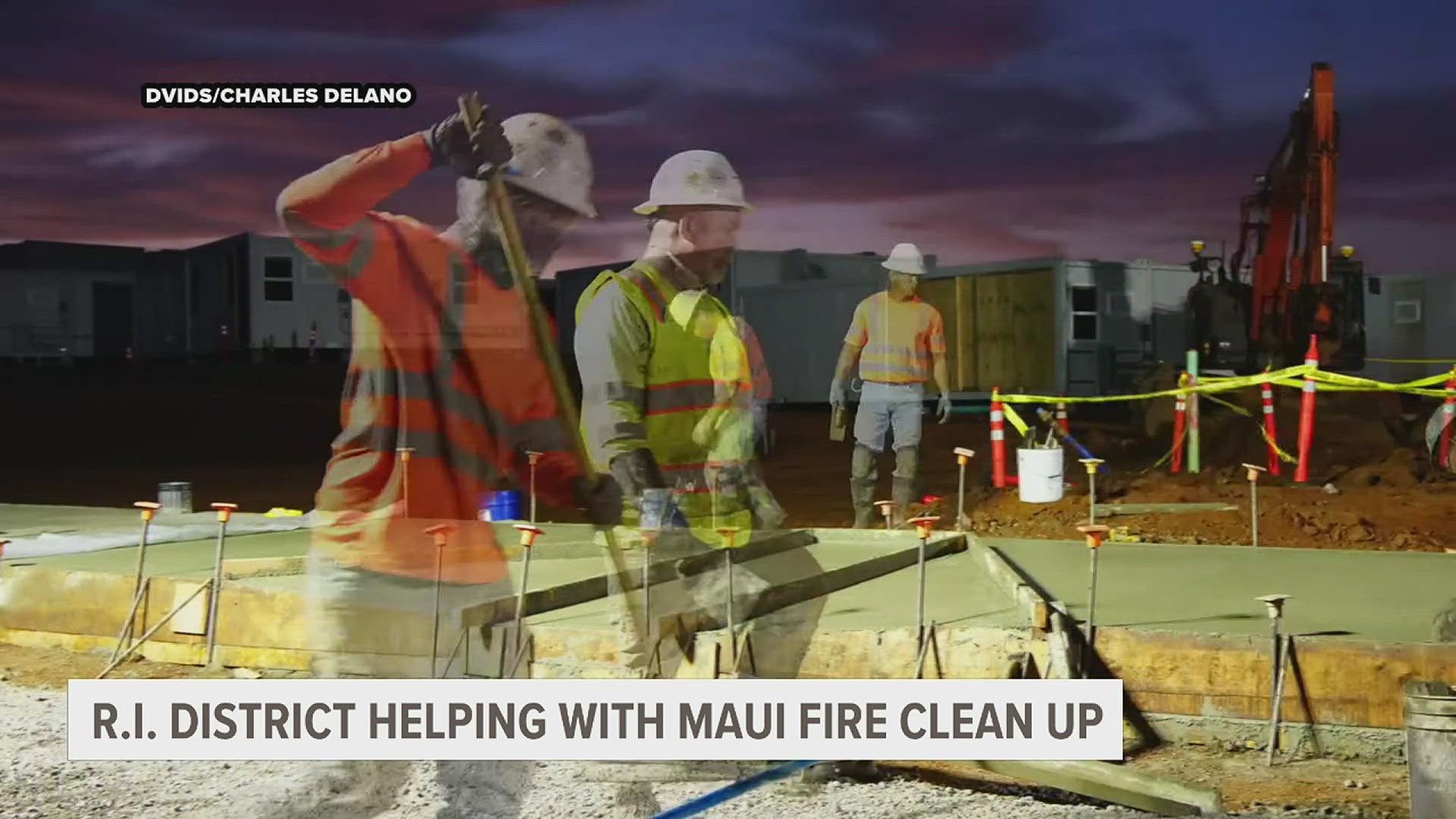LAHAINA, Hawaii — More than 150 days after devastating wildfires destroyed Lahaina in August, the historic town is still in ruins. Clean up continues to this day.
The fire killed 100 people and destroyed 2,200 Maui properties. There are still 5,000 Lahaina fire victims displaced.
In the wake of the fires, the U.S. Army Corps of Engineers was deployed to Maui, working under Federal Emergency Management-Agency assigned missions. That includes several people from the Rock Island District including Commander Col. Jess Curry.
Curry arrived in Maui at the end of August and is serving as the Recovery Field Office commander.
"When you go to Lahaina, which is the town that was most heavily affected, I mean, it's a culturally significant town, it was once the capital of the kingdom of Hawaii and hundreds and hundreds of years and generation after generation," he said. "When you get there, what you see on the internet or on the news, just can't capture it. It is just devastation and so I was blown away."
Their first mission involved emergency power and bringing in generators to help with the search and rescue efforts. After that, the USACE began its other three missions: debris removal, building a temporary school and temporary housing.
"So all the ash," Curry said. "Because of all the building materials, it does contain hazardous, heavy metals and other things that are dangerous to the community, dangerous to the environment. So we have the task of removing that debris, making all these properties clean so that people can start to rebuild. That's by far the biggest and most challenging task within this mission."
That process began in Kula, which was considered the upcountry Maui fire. USACE was able to complete all that clean-up in early January. From there, homeowners will be able to apply for permits to rebuild their properties.
The USACE reached a big milestone just last week when they moved the clean-up efforts to the properties in Lahaina.
"There's just so much cultural sensitivity with Lahaina, everywhere you step in Lahaina it's really sacred to Native Hawaiians," Curry said. "There's a lot of their generations buried on their properties and so many landmarks and things that are important to their culture. That was one of many things that we had to take our time before we could start. But for that community, seeing that first property, get all the debris removed and get made clean, was something we worked for every day up until that day."
He estimates there are about 1,600 properties needing clean-up.
"It's going to take a year to get them all done, but that emotional milestone of the first one, probably what I would put up there is the biggest one for us so far."
The USACE is also finishing up work building a temporary school. During the fire, King Kamehameha III Elementary was destroyed, displacing some 600 students. The school was originally built in 1913. The temporary school will have 337 modular units to form 10 large and 20 small classrooms. There will also be an administration building, a learning center and a combination dining and food service center.
"We've seen teachers that were distraught by the fact that their school was destroyed, coming to the site and driving by daily with some of their kids just to see the progress because they're so excited to get their kids back into school," said Sarah Jones, the recovery field office deputy chief of staff. She's also from the Rock Island District. "I think we feel it's a blessing, it's exciting to be a part of it."
Curry is hopeful students will be able to return to school after spring break for the final quarter of the school year.
"It's going to be complete by the 23rd of February, which is incredible," Curry said. "It's a really amazing and important part of the healing process here."
Both Curry and Jones emphasize the importance of the work they're doing and taking in the historic nature and cultural significance of the town they're doing it in.
"Humbling, really, it is to be here, a part of what we call our ohana," Jones said. "Every employee that comes here receives cultural awareness training. Ohana means family and we work with these people 12 hours a day, seven days a week, and we really grow to become a close-knit family here. And then in the support that we're providing to the families that were devastated by the fires, ohana is the word, the way I describe it."
"We came into an environment where there was a historical distrust of the federal government, and as we work to show that we're here to help you recover and build that trust over time, you feel it, you can see the difference," Curry said. "It's a very special thing on Maui to be welcomed into their culture and their family... As we kind of acknowledge that, being welcomed into the part of this family and taking that with us, with all the work that we do. That's something that makes every day here something that we can get through. Because it's hard work. It's heavy work."
A few dozen people from the Rock Island District have been assisting with the recovery efforts. A few dozen more are expected to deploy in the next few months.
The Red Cross is still assisting those impacted by the fires. Click here for more information on how to help.

